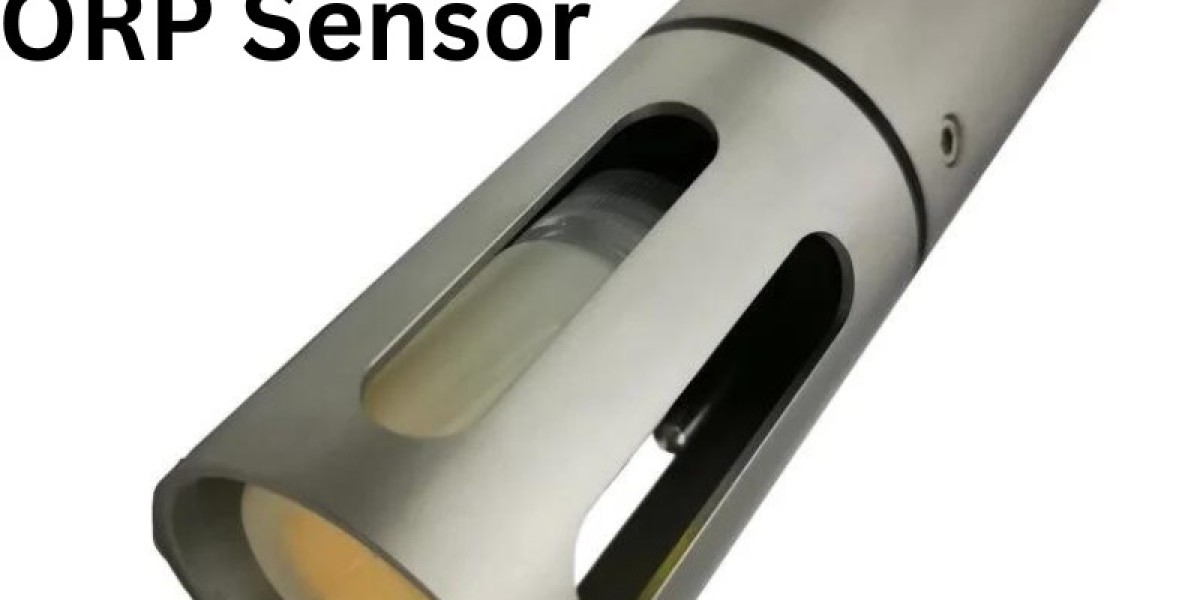Understanding ORP Sensors
An ORP sensor measures the potential difference between a reference electrode and a measuring electrode immersed in a solution. This potential difference is expressed in millivolts (mV) and indicates the solution's ability to either donate or accept electrons. A positive ORP value generally signifies an oxidative environment, where the solution is more likely to accept electrons, while a negative ORP value indicates a reductive environment, where the solution is more likely to donate electrons.
The basic components of an ORP sensor include:
- Measuring Electrode: Typically made of materials like platinum or gold, this electrode interacts directly with the solution to gauge its oxidative or reductive potential.
- Reference Electrode: Often composed of silver/silver chloride or calomel, this electrode provides a stable reference potential against which the measuring electrode's potential is compared.
- Electrolyte: An internal solution that maintains electrical contact between the measuring and reference electrodes, ensuring accurate readings.
Applications of ORP Sensors
Water Treatment: In water treatment plants, ORP sensors are used to monitor and control disinfection processes. The ORP value helps in adjusting the amount of chlorine or ozone added to the water to ensure effective pathogen removal while avoiding overuse of chemicals.
Industrial Processes: Many industrial processes involve redox reactions, where controlling the oxidative or reductive state is crucial for optimal performance. ORP sensors help in maintaining the right balance of reactants and products, ensuring efficiency and safety in processes like electroplating, mining, and chemical manufacturing.
Environmental Monitoring: ORP sensors play a significant role in environmental monitoring by tracking the oxidative/reductive conditions of natural water bodies. This data helps in assessing pollution levels, the health of aquatic ecosystems, and the effectiveness of remediation efforts.
Aquaculture: In aquaculture, ORP sensors are employed to monitor water quality in fish tanks or ponds. Maintaining an optimal ORP level is vital for the health of aquatic organisms, as it affects the availability of oxygen and the breakdown of waste products.
Food and Beverage Industry: The ORP of solutions in food and beverage processing, such as in the production of dairy products or brewing, can influence the quality and safety of the final product. ORP sensors help in ensuring that the processing conditions are optimal for maintaining product quality and extending shelf life.
Challenges and Considerations
Despite their versatility, ORP sensors face several challenges:
- Calibration: Regular calibration is essential for accurate measurements. Sensor drift or contamination can lead to erroneous readings if not properly calibrated.
- Interference: ORP sensors can be affected by various factors such as temperature fluctuations, pH changes, and the presence of interfering substances. Proper maintenance and calibration can mitigate these issues.
- Electrode Fouling: Over time, the measuring electrode can become fouled or degraded, which can impact the sensor’s performance. Regular cleaning and replacement of electrodes are necessary to ensure reliable operation.
Conclusion
ORP sensors are indispensable tools in a multitude of fields, providing critical information about the oxidative and reductive states of solutions. Their ability to deliver real-time data on redox conditions makes them vital for maintaining process efficiency, ensuring safety, and protecting environmental and public health. Understanding the operation, applications, and challenges of ORP sensors can help users optimize their use and leverage their full potential.







